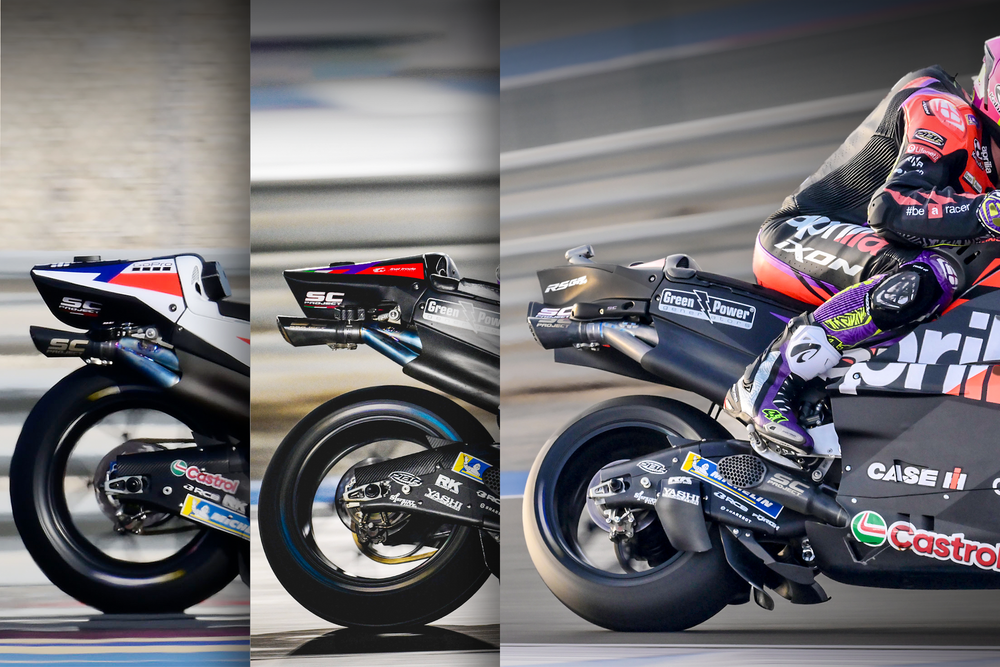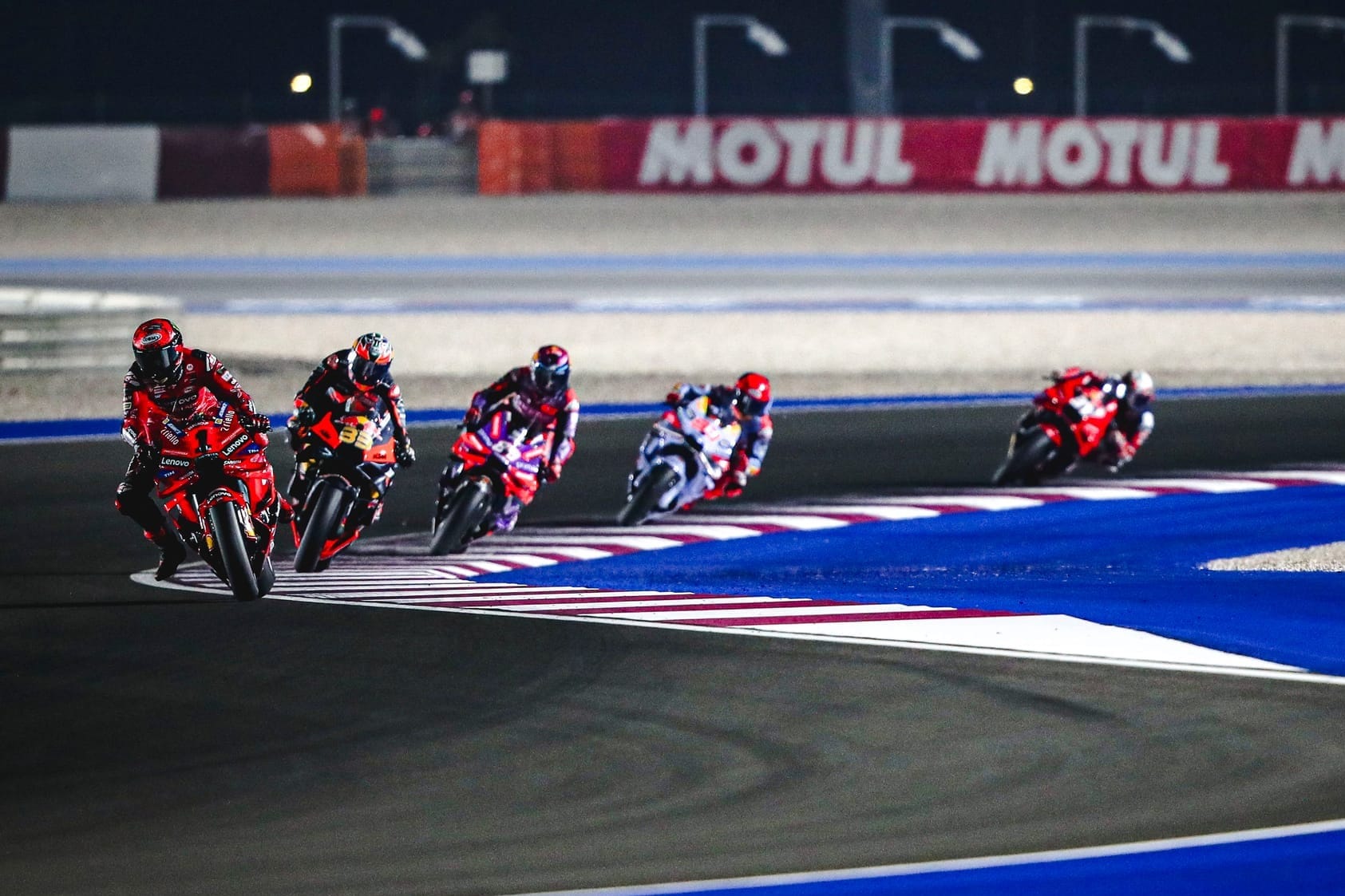The 2024 MotoGP season opener yielded a 15-point haul for lead Aprilia rider Aleix Espargaro - and only eight points combined for the other two riders on 2024-spec Aprilia RS-GPs.
It's a small sample size, and it's not exactly a huge gap. And Aprilia can hardly take much joy in 15 points for its highest-placed rider coming out of Lusail, a track where it was supposed to be very potent.
Supposed to be - but also was. Espargaro was a front-row starter, a podium finisher in the sprint and a pre-race favourite coming into Sunday, before being consigned to an "embarrassing" ride by what he perceived as a rear tyre issue out of his control.
Whatever the genesis of the issue, his pace clearly was not in line with the rest of the weekend - and even so he finished ahead of both works team-mate Maverick Vinales and Miguel Oliveira, who is in possession of the sole 2024 RS-GP(s) currently available to Aprilia's new satellite team Trackhouse.
That dichotomy between Espargaro and his peers was no huge shock, because it continued what had been a major theme in testing: Espargaro soaring and consistently fast, Vinales and (to a bigger extent) Oliveira with their ups and downs day-to-day.
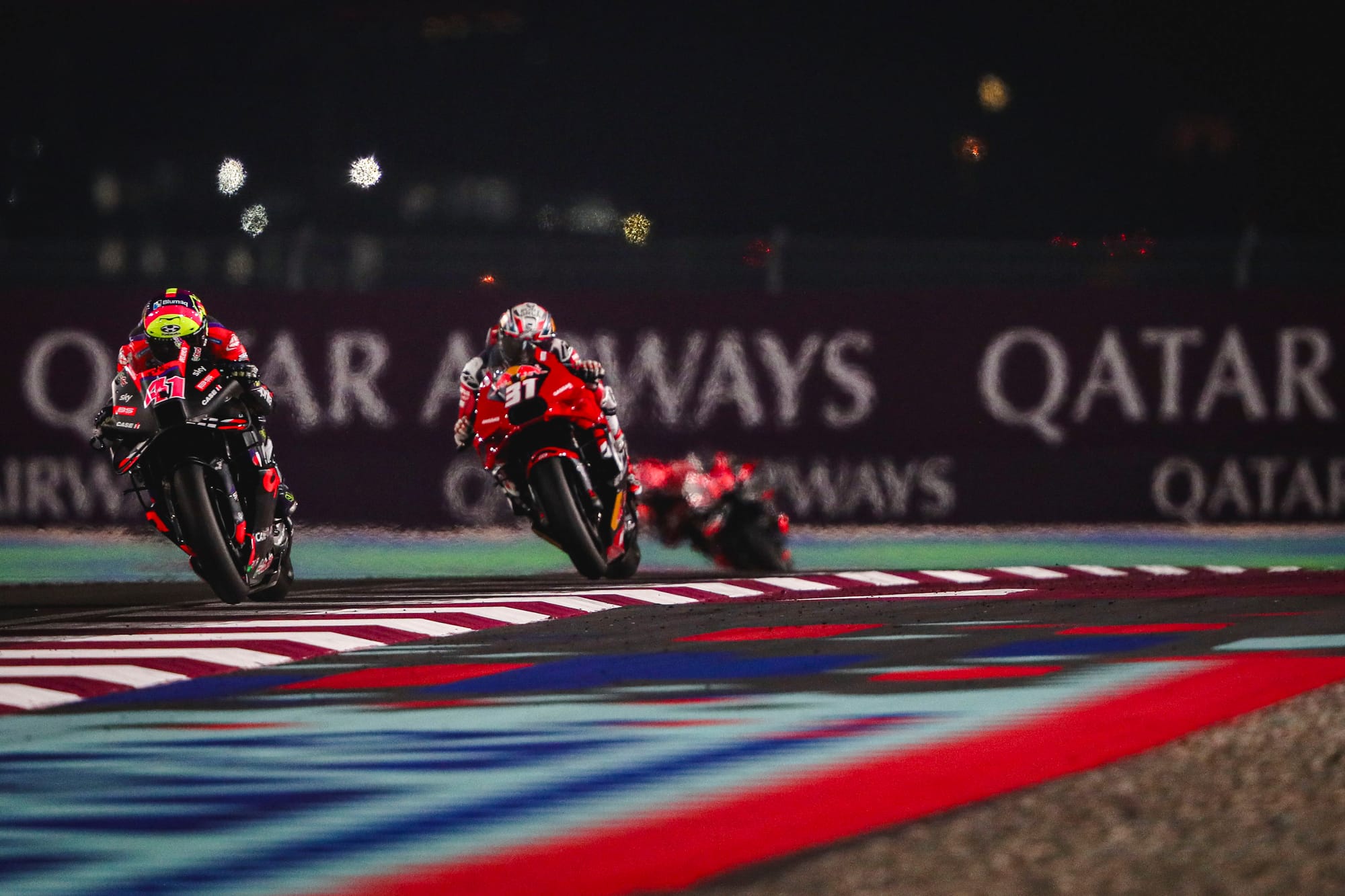
Part of that is, of course, just down to Espargaro himself. The oldest rider on the grid by nearly a year at age 34, he is just plainly very good, effectively Benjamin Button-ing the traditional MotoGP career arc.
But it's also about the 2024 Aprilia, what it has set out to do, and how only Espargaro seems to be exploiting its full strengths so far.
THE NEW RS-GP AND THE NEWER RS-GP
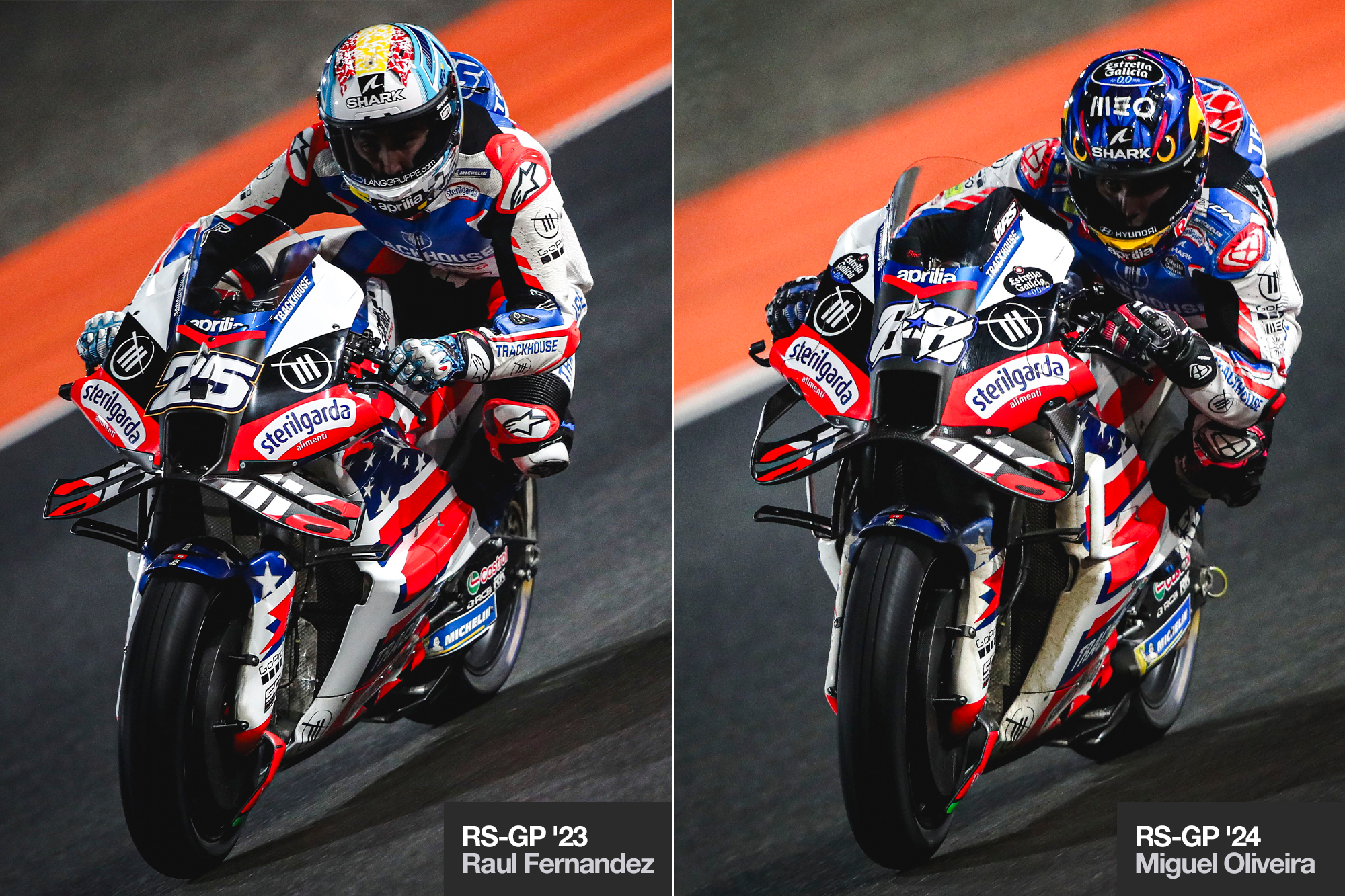
The main thing that makes Aprilia's 2024 bike different from its predecessor is the aero - the changes elsewhere in the package have largely been described as incremental.
But that seems to be the Aprilia way. Its developments often seem hyper-focused and don't always arrive as early as the upgrades brought by its more established rivals - but in those areas of focus in tends to make big steps. This is why the RS-GP has been transformed from an erratic package occasionally made a laughing stock by hideous unreliability into a bike widely admired in MotoGP - albeit one still prone to big performance oscillations and idiosyncrasies like giving its riders a consistently unwelcome faceful of hot air.
Coming into the Qatar GP, Espargaro said of Aprilia: "We are, I think, the best bike in the paddock in terms of aerodynamics." But the aerodynamics on his side are currently very different to what's in use by his RS-GP 24 peers.
And the big visual difference is in the seat unit. "Of course, the new seat was made for one purpose: trying to load more the rear," said Vinales - yet he, for now, has put it to the side.
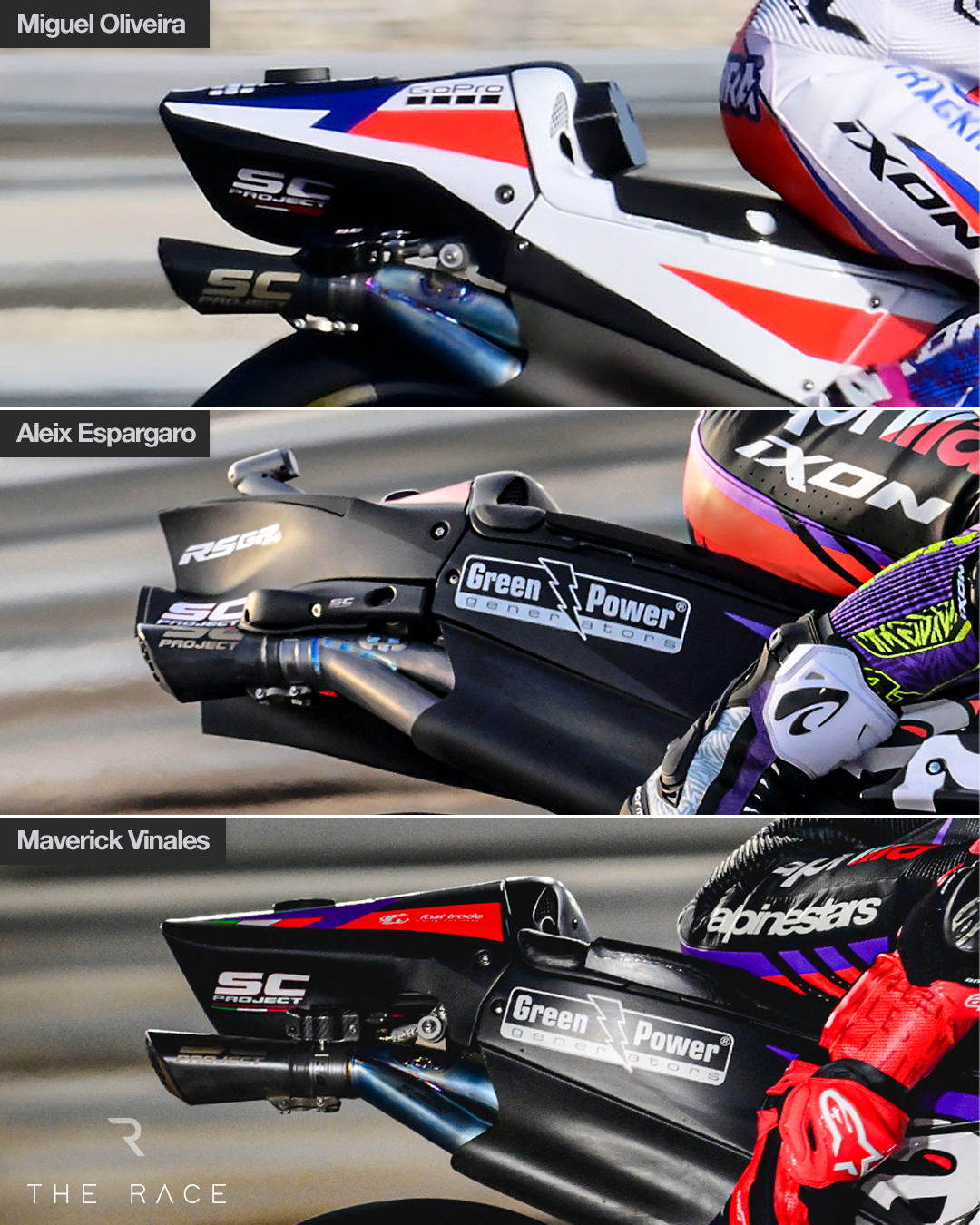
This, again, was foreshadowed by testing. Espargaro was immediately effusive in his praise of the package that includes the seat, whereas both Vinales and Oliveira were hesitant.
Aprilia boss Massimo Rivola was openly speaking of starting the season with different aero packages - and that has indeed come to pass.
"It's a good question. I don't really have an answer," said Espargaro at the Qatar GP when asked about the split preference. "You have to ask Miguel and Maverick.
"For sure the new rear part of the bike - because it's not just what you see, it's many other things - gives us a lot more downforce. And we saw with our competitors there is a direction to take.
"It's difficult to ride with, really, because you can lock the rear really easy. But I love to rush in mid-corner.
"So the more downforce, the more I enjoy. It's difficult, I recognise that it's difficult to ride like this, but I like it."
EXPLAINING THE DIVIDE
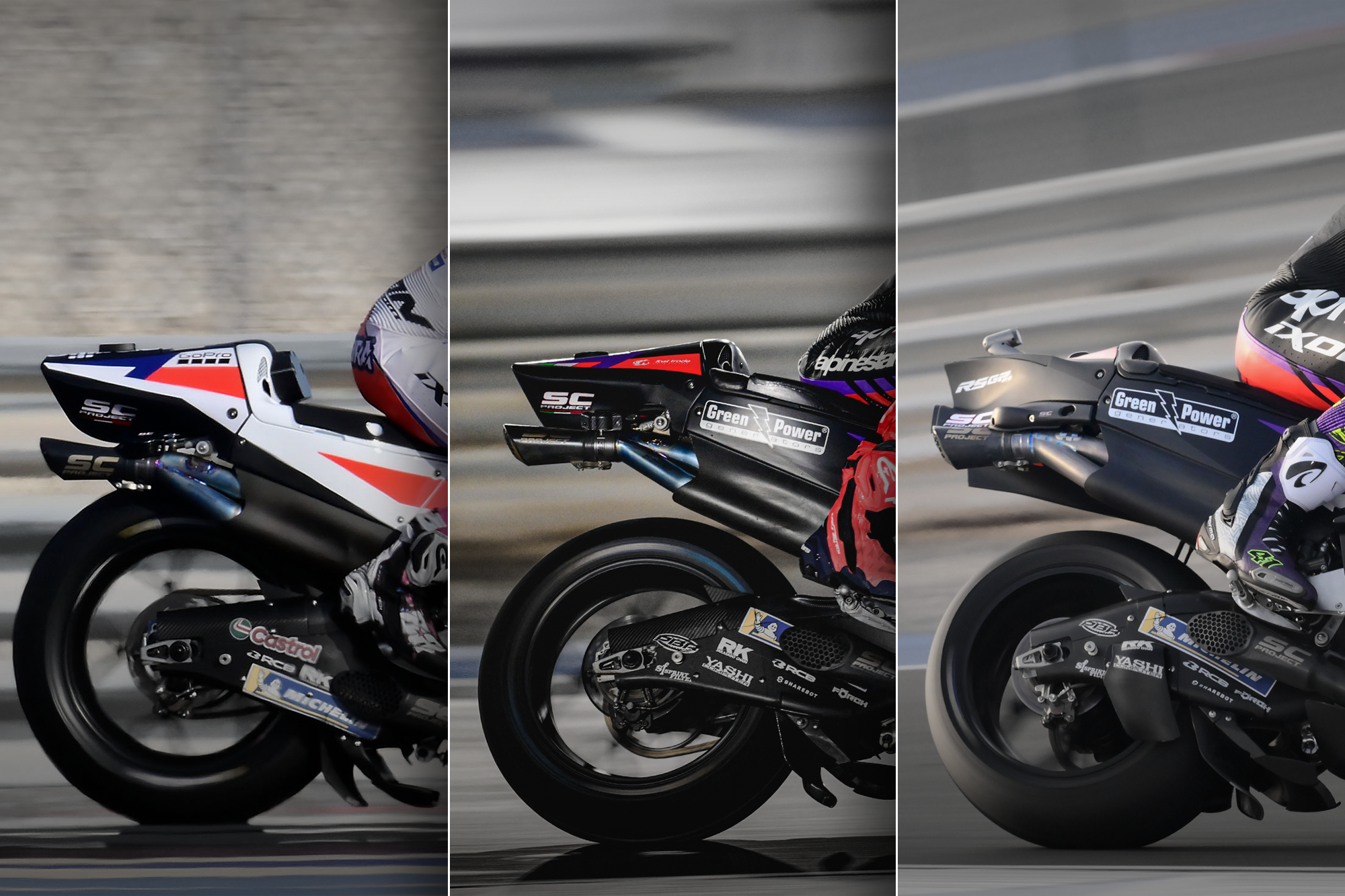
"It's not that I don't like it," Vinales did stress. And Oliveira, for his part, described the difference as being "not that high", insisting that the only reason he was riding with a more familiar tail shape is exactly that: familiarity.
But what is it that helps Espargaro exploit it right now in the way Oliveira and Vinales cannot?
Part of it, of course, is riding style.
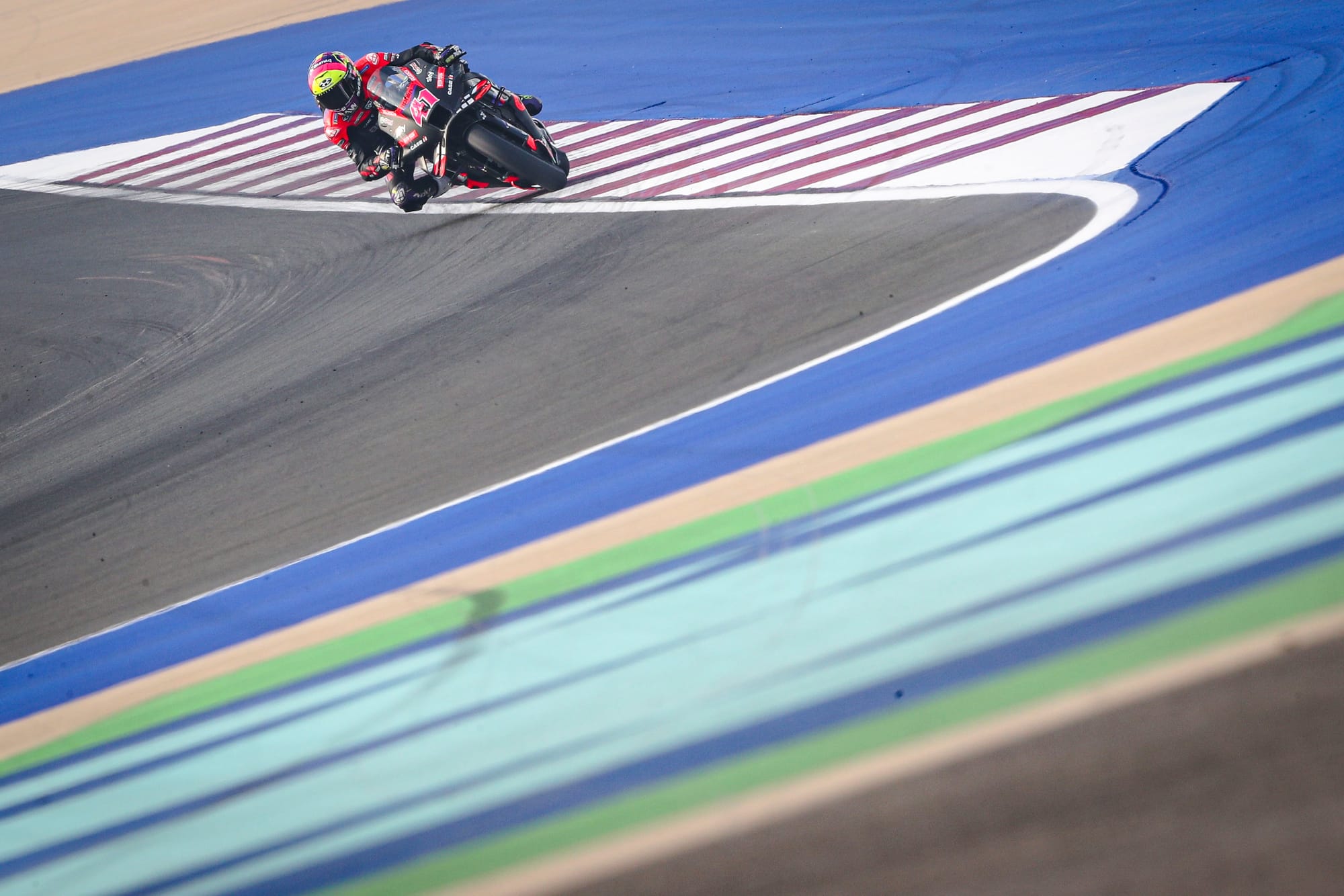
"He keeps a lot of lean angle," Oliveira said of Espargaro. "Very static on the bike.
"It seems to work. Never really tries to pick up the bike being aggressive on the throttle just to gain the speed out of the corner.
"Even on the braking zones, the bike is quite stable, never sliding. This kind of style.
"For him it's natural, it works. Especially with this new bike."
That all gels with Espargaro's description of his RS-GP's stability that comes at the expense of some agility, or at least ease. It's agility, in high-speed corners he normally counts as his strength, that Oliveira was missing through the pre-season.
"It's a matter of feeling," said Vinales. "[With the new seat unit] I get some troubles going into the corner." That, going by his pre-season comments, refers specifically to getting the bike stopped.
But, for both, it might not be as simple as just adapting.
"It seems like the new seat... probably, just my theory, just because of the different heights and body positioning, probably the seat it's affecting more us than Aleix because of his height and probably the way he positions his body," said Oliveira.
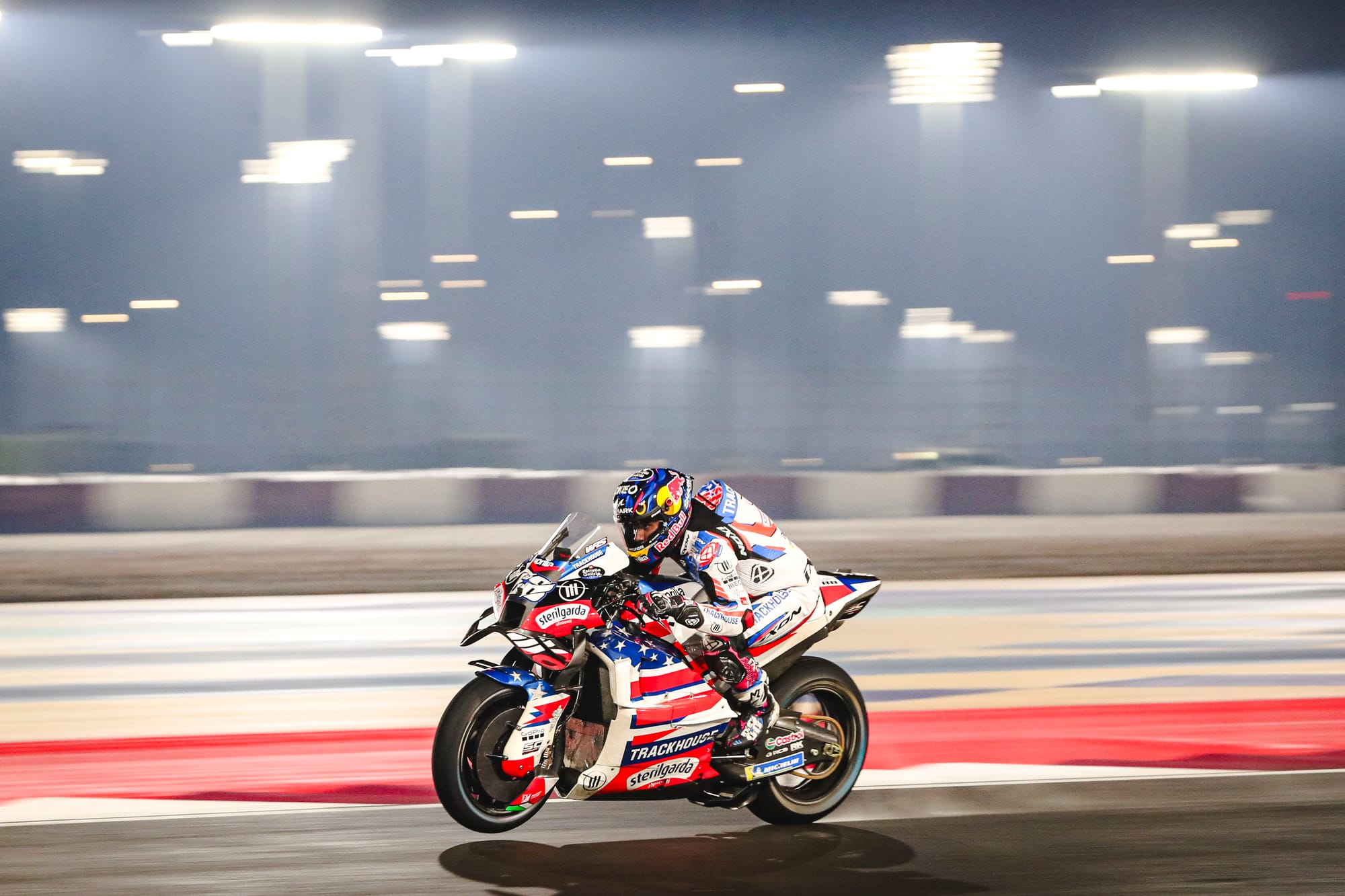
The Portuguese rider has been listed through his career as being 170cm tall (around 5'7''). Vinales is maybe 1cm taller. But Espargaro is somewhere around 180cm or 5'11".
Hence, when asked about whether he could adapt his riding style to be closer to Espargaro's, a chuckling Oliveira quipped: "I try to adapt as much as possible, but I cannot grow in height!
"It's just the way someone rides. You can adapt a few things, but it gets to a point where your approach, your interpretation of the corner, it's one.
"You can only change so much."
WHAT NOW?
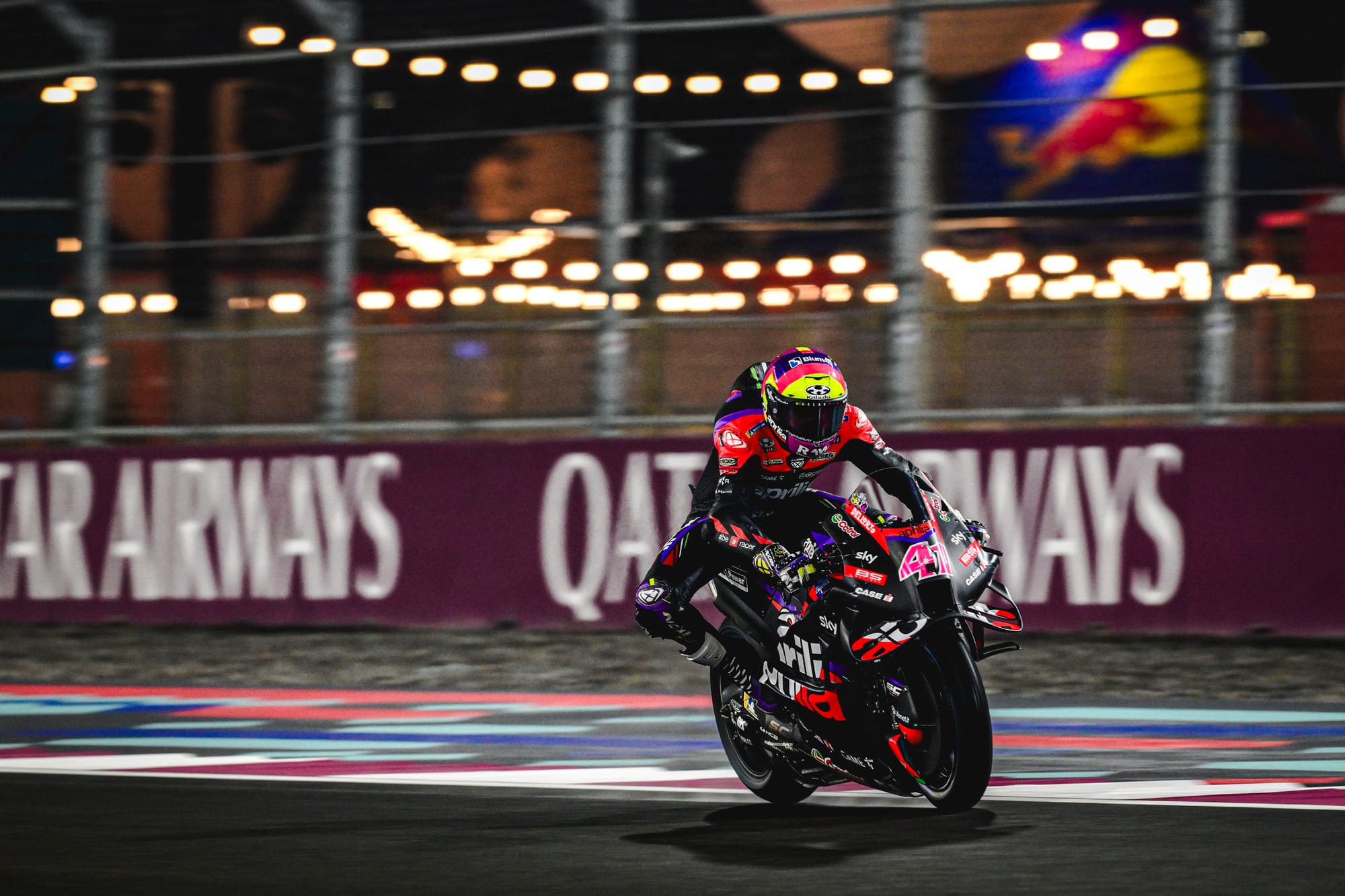
Because MotoGP aero homologation rules at the rear of the bike are different to what they are at the front, the decision by Oliveira and Vinales to start the season this way doesn't mean they can't change their mind and come towards Espargaro's RS-GP.
Indeed, Oliveira suggested that's still on the agenda, and Vinales reckoned during testing that that the seat unit could definitely be a net positive for him at some tracks - though at the Qatar opener he said that Aprilia "is trying to develop another solution, especially for myself".
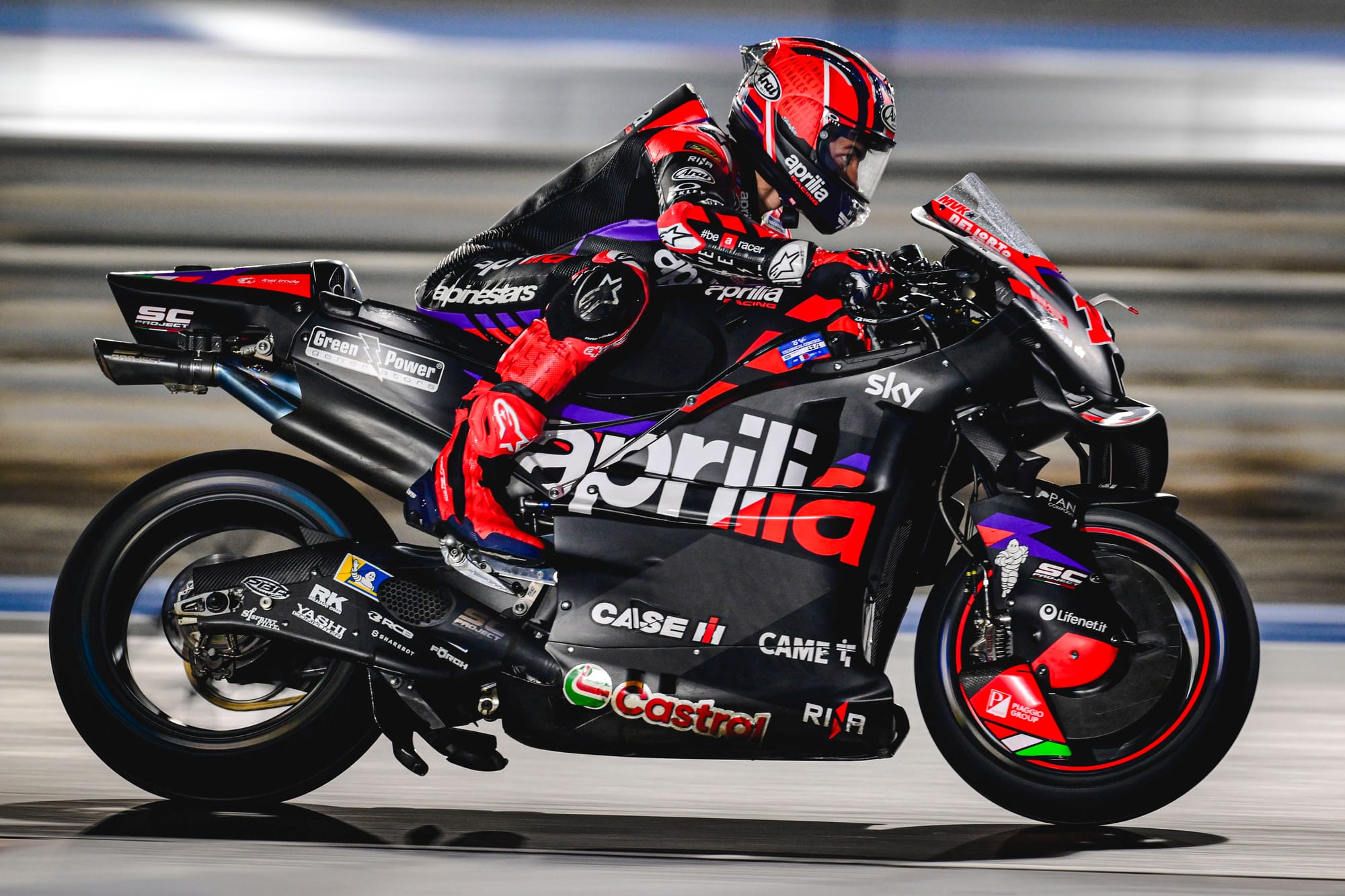
The Qatar GP showed they both do need something.
Vinales had his moments this past weekend in Qatar - a track where he's generally good and where he largely had Espargaro covered last year - but couldn't really consistently live with Espargaro and was at a loss as to the discomfort he felt with the bike. He has continued to emphasise front-rear balance, and mid-weekend described his bike feeling as being "on the moon" compared to both testing and to what Espargaro was experiencing.
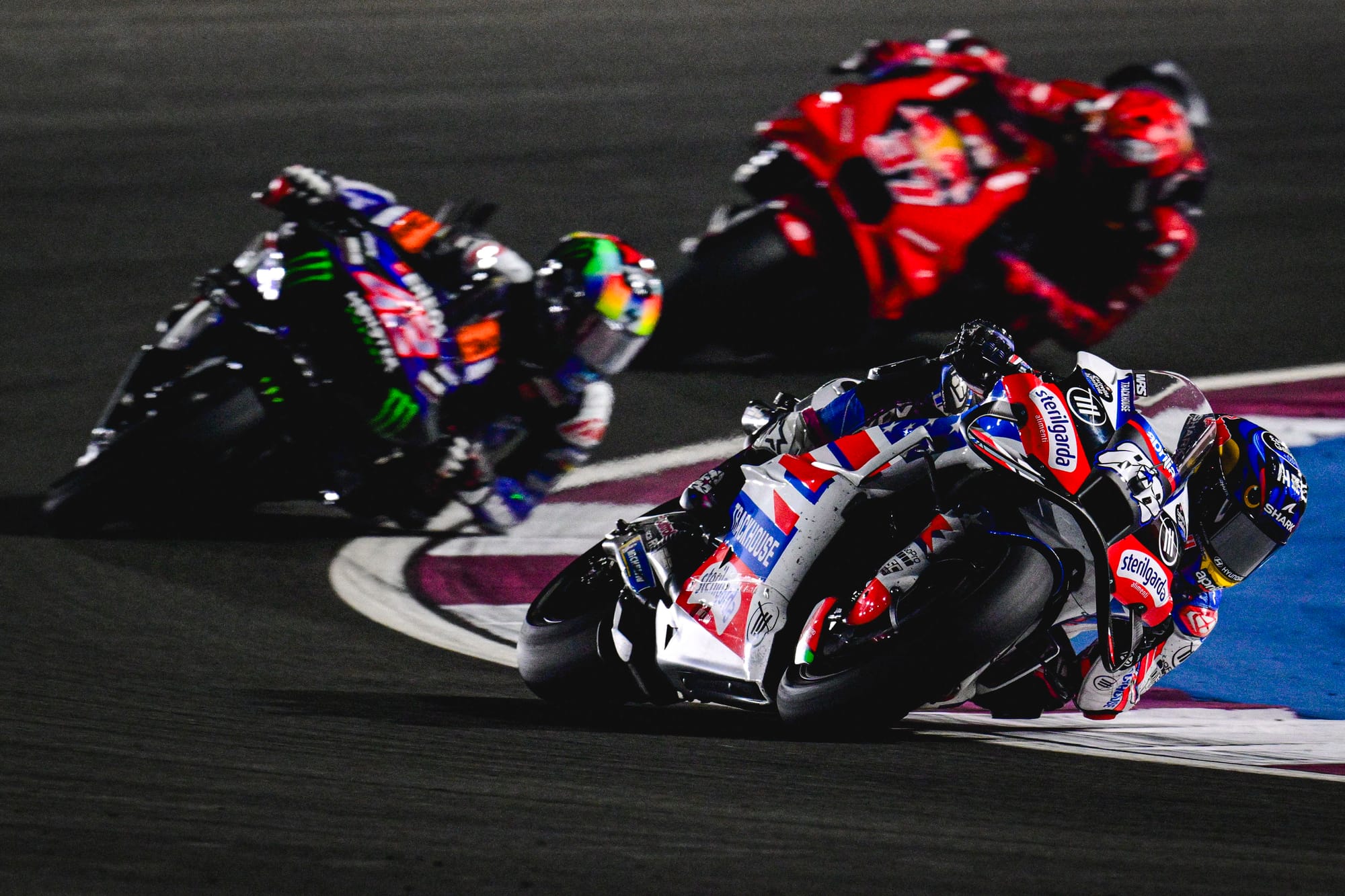
Oliveira was compromised by narrowly missing out on a direct spot in Q2 in Saturday morning's practice and a long-lap penalty carried over from his crash at (where else?) Qatar with (who else?) Espargaro last year, so it was overall smaller margins than they might seem - but he also was clearly not fully comfortable.
"We still need to get a little bit more time to get the best out of the bike. That's what I want to believe," he said.
Neither he, nor Vinales have that much time. Aprilia didn't get the results it would have wanted out of Qatar, and results are the name of the game - but, watching the RS-GP in Espargaro's hands, big-name rival riders who will be free agents at the end of the year will have loved what they saw.

